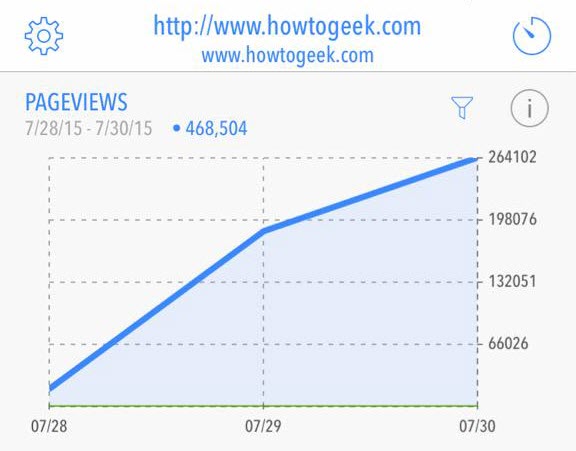How fast can Windows 10 grow?

If you make an upgrade free, easy, and compelling, people will say yes.
That seems to be the lesson of Windows 10, which has come out of the gate at full speed.
The company announced that 14 million PCs were running Windows 10 only 24 hours after the official launch on July 29. Less than a day and a half later, Daniel Rubino of Windows Central reported that an anonymous source inside Microsoft told him the total was up to 67 million. If that were true (I'm skeptical), that would mean that Microsoft had increased the pace of upgrades dramatically based on the success of those early upgraders.
ZDNet's own analytics confirm that Windows 10 is being adopted at an unprecedented pace. In the week before the upgrade began, after the Windows Insider program had released the final build to registered testers, about 1.8 percent of the visitors to this site were using Windows 10.
After a full day of upgrades, that percentage had soared: In the 24 hours beginning at midnight July 30, a day after the official launch, 8.3 percent of all traffic to ZDNet was coming from PCs running Windows 10.
Lowell Hedding, who runs the popular How-To Geek site, also reported big increases in traffic from Windows 10, sharing this graph on Twitter.

A partial explanation for the bump in traffic here and elsewhere is extraordinary interest in Windows 10. ZDNet's traffic in the day after the launch was up roughly 50 percent compared to an average weekday.
But it's also clear that Microsoft is delivering an unprecedented number of upgrades. That total of 14 million upgrades in a single day is higher than any desktop operating system ever, and now the question is how long can that sizzling pace be maintained?
What we are seeing in the first week or so is enthusiastic early adopters. More than 72 hours after the rollout began, I have test systems that are still waiting for the upgrade to be arrived, and reader emails say there are plenty of others in a similar situation who reserved an upgrade and are also still on hold.
We don't have any metrics yet on how satisfied people are with Windows 10, but based on anecdotal evidence the upgrade process seems to be working well. I've received a scattering of problem reports from people who experienced issues with the upgrade, but the number seems low compared to the scale of this launch.
More Windows 10
That suggests that Microsoft's nine-month-long Windows Insider program did its job successfully, with preview builds shaking out most of the problems the public would see at launch time.
One other statistic from ZDNet's analytics is worth noting here. Despite the bump in Windows 10 traffic, visits from PCs running Windows 7 didn't decline at all, holding steady at 33.3 percent of all visits to this site. Of course, that could be a reflection of Microsoft's strategy for delivering Windows 10, which is prioritizing upgrades on newer PCs that are most likely to have a good upgrade experience.
Still, it's reasonable to hypothesize that individuals and businesses that have stuck with Windows 7 over the past three years are skeptical of Windows 10 and see little reason to upgrade, even if it's free.
Over the next few months, Microsoft's OEM partners will gradually be replacing their inventory of PCs with new models running Windows 10, and the supply of Windows 8.1 PCs will dry up. That already happened with Windows 8, which has largely disappeared thanks to the free Windows 8.1 upgrade.
Here at ZDNet, traffic from PCs running Windows 8.1 makes up 15.9 percent of all visits, with machines running the original release of Windows 8 down at 1.1 percent.
For the long term, Microsoft's dream is to see Windows 10 running on a billion devices worldwide, with those new customers getting a steady stream of updates and never again having to deal with a version upgrade.
In that world, Microsoft would end up supporting large numbers of Windows 7 machines, most of them in businesses, and a steadily increasing number of Windows 10 devices, with Windows 8.1 declining to negligible numbers in a year or so.